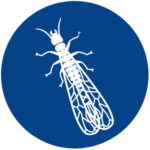Biological pest control
Natural vermin control is a technique for controlling irritations like bugs and parasites by utilizing different living beings. It depends on predation, parasitism, herbivory, parasitology, or other regular components, yet normally additionally includes a functioning human administration job. Traditional organic control includes the presentation of normal adversaries of the bug that are reared in the lab and delivered into the climate. An elective methodology is to expand the regular foes that happen in a specific region by delivering more, either in little, rehashed clumps or in a solitary enormous scope discharge. click here In a perfect world, the delivered organic entity will raise and make due, and give long haul control. Organic control can be a significant part of a coordinated nuisance of the board program. For instance, mosquitoes are frequently constrained by putting Bt Bacillus thuringiensis ssp. israelensis, a bacterium that contaminates and kills mosquito hatchlings, in neighborhood water sources.
Cultural control
![]()
Mechanical nuisance control is the utilization of involved procedures as well as straightforward gear and gadgets, that give a defensive obstruction among plants and bugs. This is alluded to as culturing and is one of the most seasoned strategies for weed control as well as being helpful for bother control; wireworms, the hatchlings of the normal snap scarab, are extremely damaging irritations of recently furrowed prairie, and rehashed development opens them to the birds and different hunters that feed on them. Crop upset can help with controlling aggravations by preventing them from getting their host plants. It is a critical technique in the control of corn rootworm and has lessened the early season recurrence of Colorado potato dreadful little creature by as much as 95%.
Trap cropping
A snare crop is a yield of a plant that draws in bugs, redirecting them from neighboring harvests. Bugs totaled on the snare harvest can be all the more handily controlled utilizing pesticides or different techniques. In any case, trap-editing, all alone, has frequently neglected to cost-actually lessen bother densities on enormous business scales, without the utilization of pesticides, potentially because of the irritations’ capacity to scatter once more into the fundamental field.
Pesticides
Pesticides are applied to crops by rural airplanes, farm vehicle mounted crop sprayers, airborne splash by current airplanes, or as seed dressings to control bothers. Nonetheless, fruitful control by pesticides is difficult; the right detailing should be picked, the timing is in many cases basic, the strategy for application is significant, and sufficient inclusion and maintenance of the harvest are important. The killing of regular foes of the objective nuisance ought to be limited. This is especially significant in nations where there are normal repositories of irritations and their foes in the wide open encompassing estate crops, and these coincide in a sensitive equilibrium. Frequently in less-created nations, the yields are very much adjusted to the neighborhood circumstance and no pesticides are required. Where moderate ranchers are utilizing manures to develop further developed crop assortments, these are many times more helpless to bother harm, however, the aimless utilization of pesticides might be adverse in the more drawn-out term.
Forestry
Woods brothers present a huge issue since getting to the shelter and screening bug populations is difficult. Furthermore, ranger service nuisances, for example, bark bugs, monitored by regular adversaries in their local reach, might be shipped huge distances in slice lumber to where they have no normal hunters, empowering them to cause broad monetary harm. Pheromone traps have been utilized to screen bug populaces in the covering. These deliver unstable synthetics that draw in guys. Pheromone traps can identify the appearance of bugs or ready foresters for flare-ups. For instance, the tidy budworm, a disastrous nuisance of tidy and resin fir, has been checked utilizing pheromone traps in Canadian backwoods for a considerable length of time. In certain districts, for example, New Brunswick, areas of woods are showered with pesticides to control the budworm populace and forestall the harm caused during flare-ups.

